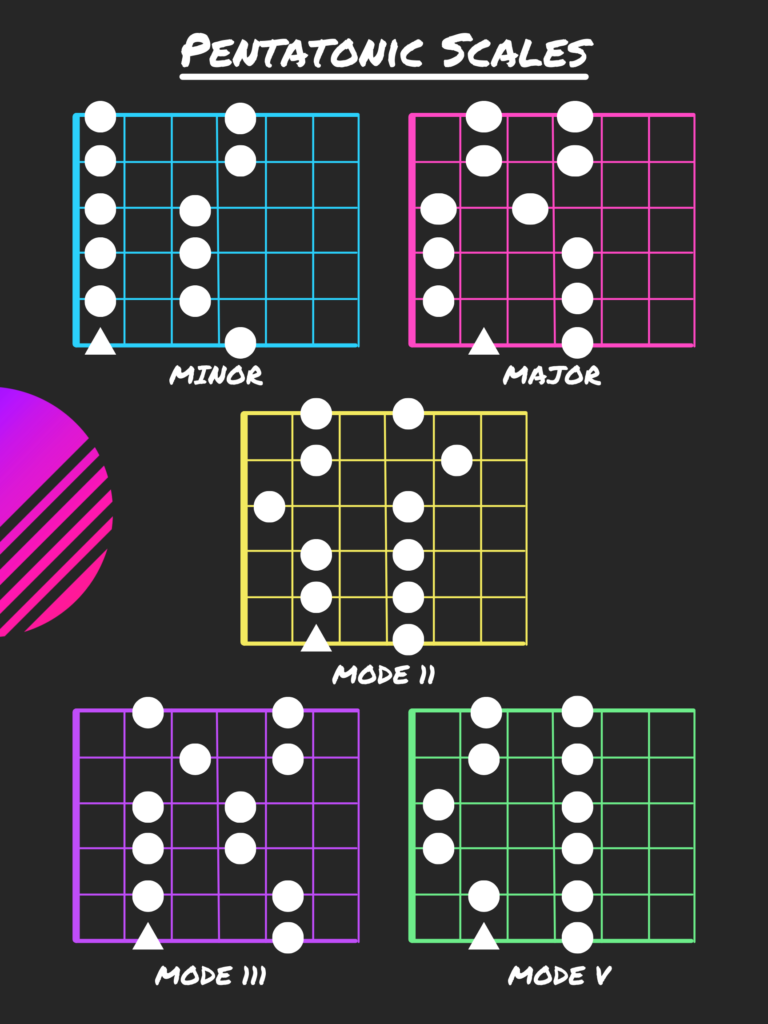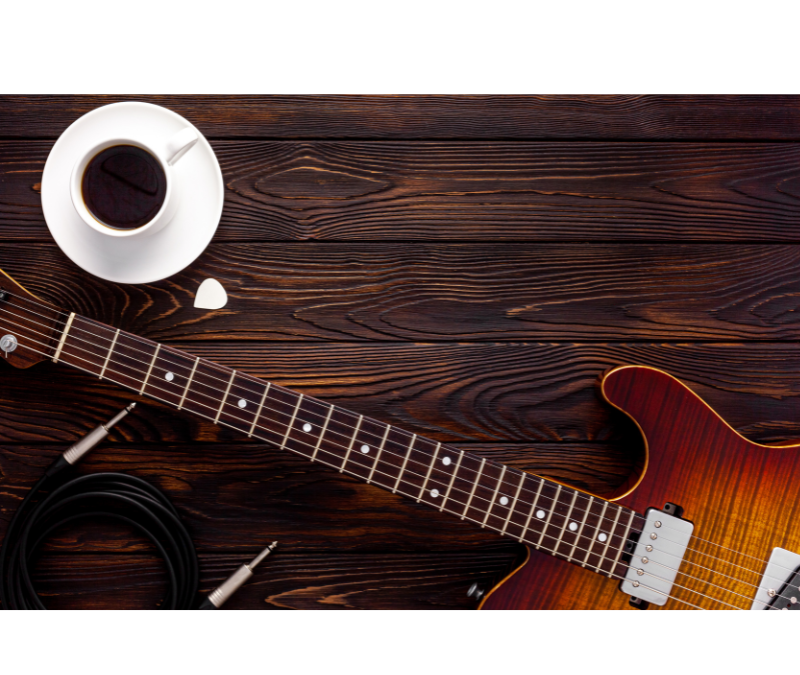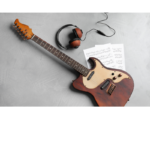When I was 14 years old my life changed. As I sat on the couch watching my guitar hero, Stevie Ray Vaughan burn up the fretboard as he played “Tightrope” on his Fender Stratocaster. It wasn’t until years later that I realized what Stevie was doing on the guitar. After years of watching Stevie play, I recognized that he was playing guitar pentatonic scales all over the guitar neck. It was completely mesmerizing to discover these guitar patterns. I remember thinking, If you can learn only 5 notes across the fretboard, then you can master the guitar. That is exactly what, I did. The inspiration was so wonderful, that I created a guitar learning tool called the FretDeck.
The Importance of Pentatonic Scales in Guitar Playing
Pentatonic scales are a fundamental aspect of guitar playing that every aspiring guitarist should master. These five-note scales are incredibly versatile and are used extensively in the Blues. By understanding the placement of these scales, you will have the ability to unlock the fretboard.
The beautiful thing about pentatonic scales is that they can be played in every single type of music. As long as you understand the key you are playing in you can use pentatonic scales. This scale type is quick and easy to learn.
Pentatonic scales are also a great starting point for beginners who are just beginning their journey into the world of guitar playing. Due to their simplicity, they are often one of the first scales that guitarists learn. Once you have a solid grasp of the pentatonic scales, you can build upon this foundation and explore more advanced scales and techniques.
Understanding the Structure of Pentatonic Scales
To truly master pentatonic scales, it’s essential to understand their structure and how they are constructed. Pentatonic scales consist of five notes per octave, hence the name “penta” meaning five. These scales are derived from the major and minor scales by removing two notes, the 2nd and 6th degrees of the major scale or the 2nd and 5th degrees of the minor scale.
The most common pentatonic scales are the major pentatonic and the minor pentatonic scales. The major pentatonic scale is constructed by taking the 1st, 2nd, 3rd, 5th, and 6th degrees of the major scale. For example, in the key of C major, the major pentatonic scale would consist of the notes C, D, E, G, and A. This scale has a bright and uplifting sound and is often used in major key progressions and solos.
Understanding the construction of pentatonic scales is crucial as it provides a roadmap for navigating the fretboard. By knowing the intervals between the notes in the scale, you can easily transpose and play the scales in different keys and positions on the guitar.
Common Pentatonic Scale Patterns
To effectively play pentatonic scales on the guitar, it’s important to familiarize yourself with the common patterns and positions on the fretboard. These patterns will serve as your roadmap and guide when playing in different keys and positions.

This chart demonstrates all 5 pentatonic scales and modes in box form. These patterns are the same for every key and can be moved around across the fretboard. The scale patterns are “moveable” for every key. Here are the types of modes within the pentatonic system:
- Major Pentatonic
- Minor Pentatonic
- Mode II
- Mode III
- Mode V
By practicing and familiarizing yourself with these common pentatonic scale patterns, you’ll be able to effortlessly navigate the fretboard and play the scales in different keys and positions.
Techniques for Playing Pentatonic Scales on the Guitar
Now that you understand the structure and patterns of pentatonic scales, let’s explore some techniques for playing them on the guitar. These techniques will help you add dynamics, expression, and creativity to your solos and improvisations.
- Technique #1, Play with jam tracks
- Technique #2, Play with others
- Technique #3, Listen to your favorite records & play along
- Technique #4, Play arpeggios with pentatonic scales
Practicing guitar pentatonic scales in this manner will help exercise your ears to the sound of the scale. My favorite practice technique is playing along with jam tracks. This has become my main practice exercise because it allows me to be free in my creativity.

Download The FretDeck & Pentatonic Secrets Course!
Download Our Course










